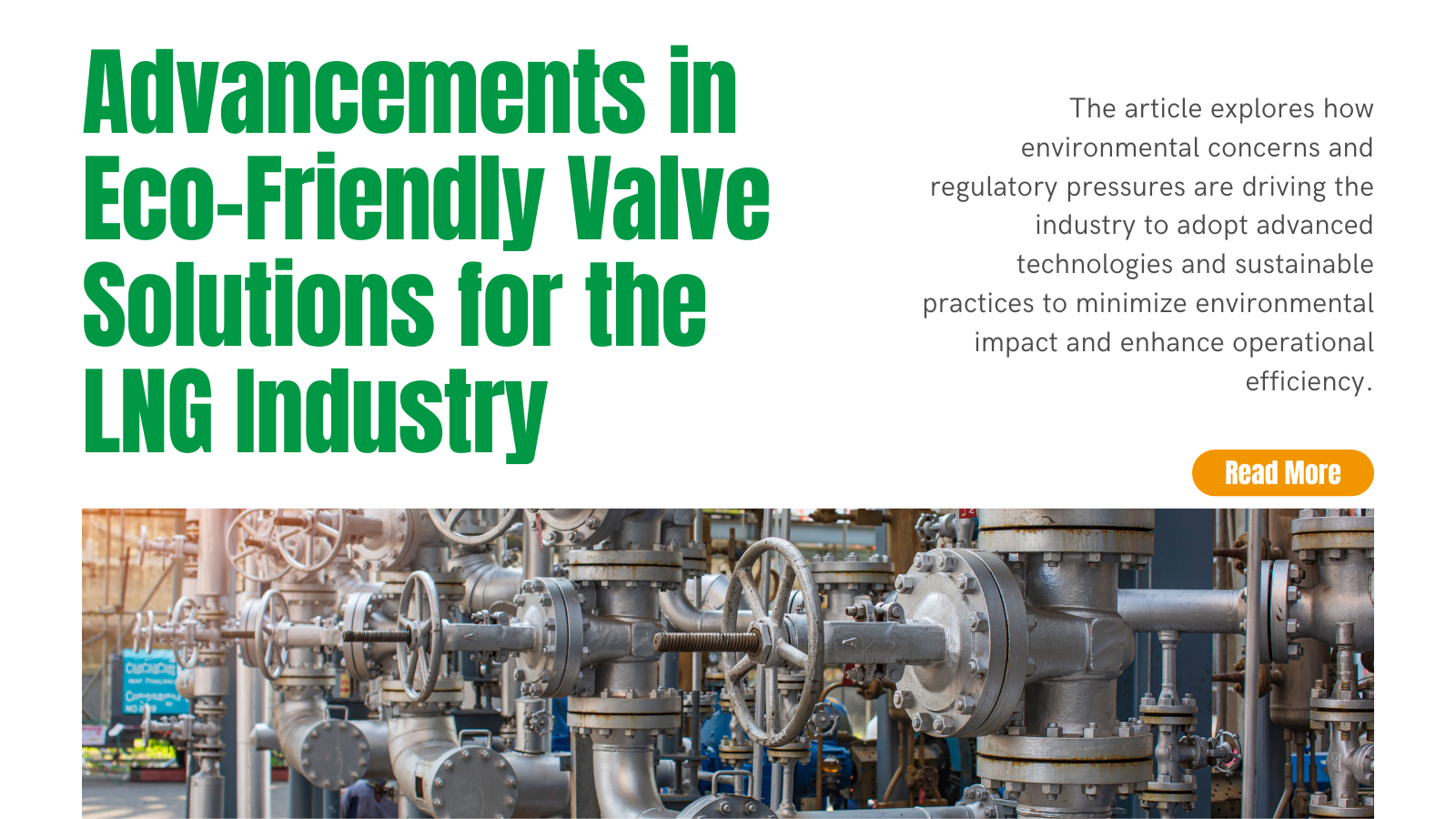Innovation and Sustainability: Advancements in Eco-Friendly Valve Solutions for the LNG Industry

The convergence of innovation and sustainability in the LNG industry is driving the development of eco-friendly valve solutions. As environmental concerns and regulatory pressures intensify, the industry is adopting advanced technologies and sustainable practices to minimize environmental impact and enhance operational efficiency. This article explores the latest trends in sustainable valve technology, highlighting how these advancements are shaping the future of the LNG sector towards a greener and more sustainable tomorrow.
Embracing Renewable and Recyclable Materials
Sustainable Materials for Valve Production
Valve suppliers are increasingly turning to renewable and recyclable materials to minimize the environmental impact of their products. By using bio-based plastics, recycled metals, and other sustainable alternatives, they are replacing traditional, more environmentally harmful materials. These sustainable materials provide the same level of performance and durability as conventional ones, ensuring that quality is not compromised while significantly reducing the carbon footprint associated with valve production.
Benefits of Renewable and Recyclable Materials
- Reduced Carbon Footprint: Utilizing materials that can be recycled or are derived from renewable sources helps in cutting down the carbon emissions associated with manufacturing processes.
- Waste Minimization: By integrating recyclable materials, the amount of industrial waste is reduced, contributing to a cleaner environment.
- Sustainable Supply Chains: Using renewable resources supports the development of sustainable supply chains, promoting long-term ecological balance.
Design Optimization: Enhancing Efficiency and Reducing Emissions
Low-Leakage Seals and Energy-Efficient Actuators
Valve design plays a crucial role in enhancing sustainability. One of the key advancements in this area is the development of low-leakage seals. These seals significantly reduce the risk of gas leaks, thereby minimizing emissions and enhancing safety. The adoption of low-leakage seals is a testament to the industry's commitment to reducing its environmental footprint and adhering to stringent regulatory standards.
Energy efficiency is another critical aspect of sustainable valve design. Modern valves are equipped with energy-efficient actuators that optimize the use of power, reducing overall energy consumption. These actuators not only contribute to lower operational costs but also align with global efforts to reduce greenhouse gas emissions. By incorporating energy-efficient components, the LNG industry is paving the way for more sustainable operations.
Advantages of Energy-Efficient Design
- Operational Cost Savings: Energy-efficient valves lower the overall energy consumption, leading to reduced operational costs.
- Pressure Ratings: Despite the focus on energy savings, these valves do not compromise on performance, ensuring reliable operation.
- Sustainability Goals: Industries can meet their energy optimization and sustainability objectives more effectively with these advanced valve designs.
Precision Manufacturing Techniques
Advanced Manufacturing for Sustainability
Precision manufacturing techniques, such as computer numerical control (CNC) machining and additive manufacturing, are employed by leading valve suppliers to minimize material waste and energy consumption. These advanced techniques allow for precise valve production, ensuring high quality and consistent performance while reducing the environmental impact of the manufacturing process.
Key Benefits of Precision Manufacturing
- Material Efficiency: Precision techniques reduce the need for excessive material removal, minimizing waste.
- Energy Conservation: These methods use less energy compared to traditional manufacturing processes, contributing to overall energy savings.
- Quality Assurance: The precision and consistency achieved through advanced manufacturing ensure that each valve meets high standards of quality and durability.
Longevity and Durability for Reduced Environmental Impact
Durable Valve Solutions
A critical aspect of sustainable valve solutions is their longevity and durability. Leading suppliers are focusing on developing valves that have an extended lifespan and require minimal maintenance. This approach reduces the need for frequent replacements, thereby conserving resources and reducing waste generation.
Environmental Benefits of Durable Valves
- Resource Conservation: Longer-lasting valves mean fewer resources are needed for replacements, leading to significant resource savings.
- Waste Reduction: Durable valves generate less waste over their lifecycle, supporting a more sustainable industrial practice.
- Lower Maintenance: High-quality, durable valves require less frequent maintenance, reducing downtime and operational disruptions.
These emerging trends and advancements in valve technology are reshaping the landscape of valve selection and optimization in the LNG industry. By staying abreast of these developments and collaborating with industry experts, operators can leverage the latest innovations to achieve improved efficiency, safety, and environmental sustainability in their LNG operations.
Partnership for Sustainable Solutions
Collaborative Efforts for Sustainability
Valve suppliers are actively forming partnerships with various industries to develop tailored sustainable solutions. By working closely with their customers, they gain a deep understanding of specific environmental requirements and challenges. This collaboration results in customized valve solutions that align with eco-friendly practices, such as water conservation, emissions reduction, and waste management.
Benefits of Industry Partnerships
- Customized Solutions: Tailored valve solutions that meet specific sustainability goals of different industries.
- Enhanced Innovation: Collaborative efforts lead to the development of innovative, industry-specific sustainable technologies.
- Shared Expertise: Partnerships facilitate the exchange of knowledge and best practices, driving overall industry progress towards sustainability.
Conclusion: Paving the Way for a Sustainable Future
As the global focus on sustainability intensifies, leading valve suppliers are playing a pivotal role in providing eco-friendly solutions that support various industries. By embracing renewable materials, optimizing designs for energy efficiency, employing precision manufacturing techniques, and developing durable products, these suppliers are driving significant positive change. Their collaborative efforts with industries ensure that sustainability goals are met, paving the way for a greener and more sustainable future. Together, valve suppliers and industries can make substantial strides towards environmental protection and sustainability. The continued investment in research and development, coupled with a commitment to best practices, will ensure that the LNG industry remains at the forefront of innovation and sustainability. As stakeholders collaborate to drive these advancements, the LNG sector is well-positioned to navigate the challenges of tomorrow and lead the way in sustainable energy solutions.
